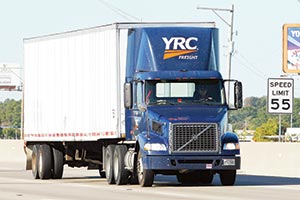N.Y. Teamsters Fund to Seek US Approval to Slash Retiree Pension Benefits By 31%

This story appears in the Aug. 22 print edition of Transport Topics.
The New York State Teamsters Conference Pension and Retirement Fund later this month plans to seek federal approval to cut retiree pension benefits by 31%, becoming the second trucking union planning to announce that step as a way of preserving future benefits.
The move follows the application by the Central States Pension Fund, the largest Teamsters plan, with about 400,000 members, that would have cut retirees under age 75 by 50% or more. The Treasury Department rejected Central States application in May, and trustees subsequently announced they have no plans to refile. Instead, fund leadership in May appealed to Congress to fix Central States finances that are on course to run out of money in a decade.
The New York Fund, covering about 35,000 people, also plans to cut pensions by 20% for active workers.
An Aug. 25 Treasury filing date was targeted for the New York Fund, which includes eight upstate locals and one in Union City, New Jersey. If approved, cuts would be effective July 1, 2017.
“We are determined not to allow our fund to deteriorate to a point where the fund cannot be saved,” a letter sent to participants last week said, labeling the effort as the Pension Preservation Plan, or PPP. “This is a difficult decision. We recognize the hardship these proposed benefit reductions will create. The PPP needs to be implemented now. If we wait to take action, we will be forced to make even larger cuts later.”
The Multiemployer Pension Reform Act of 2014 established a process for troubled funds to seek government approval to make the cuts, including an option to enforce them even if participants vote to reject the reductions.
New York’s fund proposed no cuts for those age 80 and older on July 31, 2017. Proportional cuts would be made for participants between 75 and 79, based on age.
The proposal also outlined how it would make “fair and equitable” cuts, in line with the 2014 law. Central States’ application was rejected in part because the agency said it was neither fair nor equitable.
New York’s fund also justified the percentage differences for active and retired participants by noting that actives’ benefits have been cut several times in recent years, while retirees have not.
Though Central States and New York proposed cuts, some other Teamsters Funds, such as the one covering western U.S. workers, remain solvent.
Meanwhile, several steps are continuing in Washington on the pension front.
The Government Accountability Office continues to study union pension issues, with no fixed completion date.
In addition, Senate Democrats have tried, so far without success, to press Republican leadership to address pension issues.
The Finance Committee hasn’t yet tackled the Teamsters situation. However, the committee plans to vote later this year on a separate measure covering some union mine workers’ benefits that are slated to expire in December, said a spokesman for Ohio Republican Sen. Rob Portman, a committee member.
Portman is one of two senators who have sponsored legislation to address Teamsters pensions. The other bill was sponsored by Sen. Bernie Sanders (I-Vt.). Neither bill has advanced.
Union officials tell Transport Topics they’re continuing to address pension reform.
“The [International Brotherhood of Teamsters] is working on getting bipartisan support for legislation that will change the debate in Congress,” Teamsters Vice President John Murphy said Aug. 17.
He has compared the issue to “a runaway freight train” because pensions haven’t been addressed for decades while funds dwindled.
New York pays about $2.65 in benefits for each dollar collected. Central States pays even more at $3.46.

